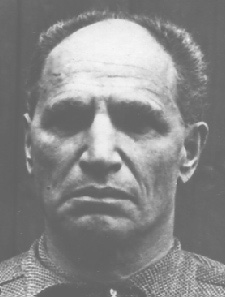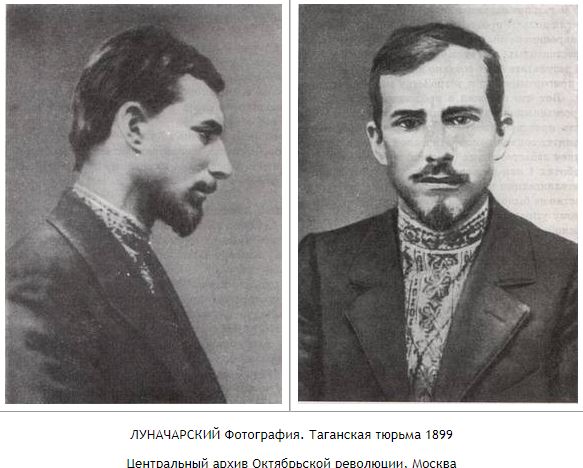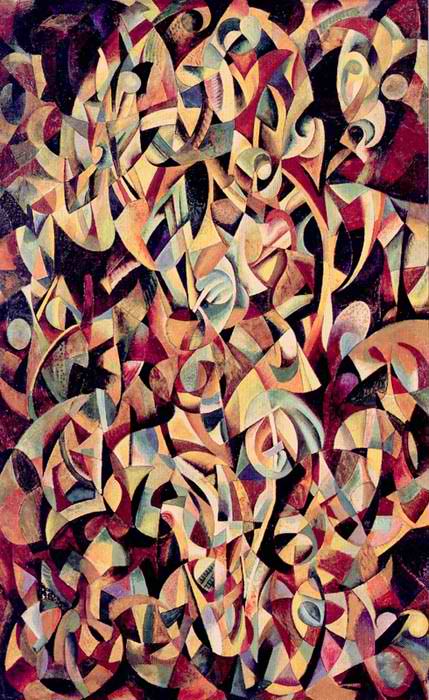|
About That
''About That'' (Про это) is a poem by Vladimir Mayakovsky written during the self-imposed two-months "exile" after a row with Lilya Brik. It was finished on 11 February 1923 and published on 1923 in poetry, 29 March 1923, originally by the ''LEF (journal), LEF'' magazine. The poem's first separate edition was illustrated by Alexander Rodchenko who in his montages used photographs made by Mayakovsky and Lilya Brik. History In summer 1922 Lilya Brik fell in love with Alexander Krasnoshchyokov, the then head of the newly formed Prombank. Mayakovsky was outraged, a quarrel ensued and the terms of the two-month separation have been agreed between the two. As a result, the poet departed to his 'boat-room' at the Lybyansky Lane, 3/6, "banned" from visiting the Briks at their Vodopyany Lane home. There, working for 16-20 hours a day, he wrote ''About That''. On 11 February it was finished. "That was arguably my best poem in terms of the editorial work done upon it," he later wrote ... [...More Info...] [...Related Items...] OR: [Wikipedia] [Google] [Baidu] |
WikiProject Novels
A WikiProject, or Wikiproject, is a Wikimedia movement affinity group for contributors with shared goals. WikiProjects are prevalent within the largest wiki, Wikipedia, and exist to varying degrees within sister projects such as Wiktionary, Wikiquote, Wikidata, and Wikisource. They also exist in different languages, and translation of articles is a form of their collaboration. During the COVID-19 pandemic, CBS News noted the role of Wikipedia's WikiProject Medicine in maintaining the accuracy of articles related to the disease. Another WikiProject that has drawn attention is WikiProject Women Scientists, which was profiled by '' Smithsonian'' for its efforts to improve coverage of women scientists which the profile noted had "helped increase the number of female scientists on Wikipedia from around 1,600 to over 5,000". On Wikipedia Some Wikipedia WikiProjects are substantial enough to engage in cooperative activities with outside organizations relevant to the field at issue. For e ... [...More Info...] [...Related Items...] OR: [Wikipedia] [Google] [Baidu] |
Alexander Krasnoshchyokov
Alexander Mikhailovich Krasnoshchyokov (russian: Алекса́ндр Миха́йлович Краснощёков, real name – Avraam Moiseevich Krasnoshchyok, russian: Абра́м Моисе́евич Краснощёк, October 10, 1880 – November 26, 1937) was a Soviet politician and the first Chairman of the Government (Head of the state) of the Far Eastern Republic, and later the first leading Bolshevik to be arrested by the regime. Early life Born at Chernobyl, son of a Jewish shop assistant, he joined an illegal Marxist group as a teenager in 1896, and the Russian Social Democratic Labour Party soon after it was founded. He was arrested in 1898 and briefly imprisoned, before being exiled to Nikolaievsk where he met Leon Trotsky. After his release he returned to the Ukraine where he joined Martov in political agitation and organised a workers association in Ekaterinoslav. He was again arrested and imprisoned in 1901. On his release he found himself under constant poli ... [...More Info...] [...Related Items...] OR: [Wikipedia] [Google] [Baidu] |
Siberia
Siberia ( ; rus, Сибирь, r=Sibir', p=sʲɪˈbʲirʲ, a=Ru-Сибирь.ogg) is an extensive geographical region, constituting all of North Asia, from the Ural Mountains in the west to the Pacific Ocean in the east. It has been a part of Russia since the latter half of the 16th century, after the Russians conquered lands east of the Ural Mountains. Siberia is vast and sparsely populated, covering an area of over , but home to merely one-fifth of Russia's population. Novosibirsk, Krasnoyarsk and Omsk are the largest cities in the region. Because Siberia is a geographic and historic region and not a political entity, there is no single precise definition of its territorial borders. Traditionally, Siberia extends eastwards from the Ural Mountains to the Pacific Ocean, and includes most of the drainage basin of the Arctic Ocean. The river Yenisey divides Siberia into two parts, Western and Eastern. Siberia stretches southwards from the Arctic Ocean to the hills of north-ce ... [...More Info...] [...Related Items...] OR: [Wikipedia] [Google] [Baidu] |
Boris Pasternak
Boris Leonidovich Pasternak (; rus, Бори́с Леони́дович Пастерна́к, p=bɐˈrʲis lʲɪɐˈnʲidəvʲɪtɕ pəstɛrˈnak; 30 May 1960) was a Russian poet, novelist, composer and literary translator. Composed in 1917, Pasternak's first book of poems, ''My Sister, Life'', was published in Berlin in 1922 and soon became an important collection in the Russian language. Pasternak's translations of stage plays by Goethe, Schiller, Calderón de la Barca and Shakespeare remain very popular with Russian audiences. Pasternak is the author of ''Doctor Zhivago'' (1957), a novel that takes place between the Russian Revolution of 1905 and the Second World War. ''Doctor Zhivago'' was rejected for publication in the USSR, but the manuscript was smuggled to Italy and was first published there in 1957. Pasternak was awarded the Nobel Prize in Literature in 1958, an event that enraged the Communist Party of the Soviet Union, which forced him to decline the prize. In 198 ... [...More Info...] [...Related Items...] OR: [Wikipedia] [Google] [Baidu] |
David Shterenberg
David Petrovich Shterenberg (russian: Давид Петрович Штеренберг; Zhitomir – May 1, 1948 Moscow) was a Ukrainian-born Russian Soviet painter and graphic artist. Life Born to a Jewish family in Zhitomir, Ukraine, Shterenberg studied art in Odessa and then from 1906-1912 based himself in Paris where he studied with, amongst others, Kees van Dongen. He studied at the Académie Vitti in Paris. He was influenced by the works of Paul Cézanne and by Cubism. He made return visits to Russia but did not settle there until after the Revolution of 1917, when he was supported by his acquaintance Lunacharsky, who was the People's Commissar responsible for culture. He attended the ''Conference of Authors, Artists and Directors'' on cooperation with the Soviet Government at the Smolny Palace in Petrograd (St.Petersburg) with Nathan Altman and others . In 1917 -1918 he was a Commissar for Artistic Matters. In 1918 he had an exhibition with the group ''Jewish Society fo ... [...More Info...] [...Related Items...] OR: [Wikipedia] [Google] [Baidu] |
Nikolai Aseyev
Nikolai Nikolayevich Aseyev ( rus, Никола́й Никола́евич Асе́ев, p=nʲɪkɐˈlaj nʲɪkɐˈlajɪvʲɪtɕ ɐˈsʲejɪf, a=Nikolay Nikolayevich Asyeyev.ru.vorb.oga; July 10, 1889 - July 16, 1963) was a Russian and Soviet Futurist poet and writer. Biography Nikolai was born in the city of Lgov in the region of Kursk. He studied a technical school in the city and had also attended the Moscow Institute of Commerce. Aseyev joined the army in 1915 until 1917. It is said that Velimir Khlebnikov and Vladimir Mayakovsky were two of Aseyev's literary influences. Works In 1914, Aseyev helped form a young poets' group called ''Lirika''. In the same year, his first poetic collections, "Night Flute" (''Nochnaia fleita''), and "Zor", which were written in the Russian Futurist style, were published. The former also reflected traces of Russian Symbolism. Aseyev was awarded a government honor for the latter poem in 1941. Aseyev's work has been known for its interest ... [...More Info...] [...Related Items...] OR: [Wikipedia] [Google] [Baidu] |
Anatoly Lunacharsky
Anatoly Vasilyevich Lunacharsky (russian: Анато́лий Васи́льевич Лунача́рский) (born Anatoly Aleksandrovich Antonov, – 26 December 1933) was a Russian Marxist revolutionary and the first Bolshevik Soviet People's Commissar (Narkompros) responsible for Ministry of Education as well as an active playwright, critic, essayist and journalist throughout his career. Background Lunacharsky was born on 23 or 24 November 1875 in Poltava, Ukraine (then part of the Russian Empire) as the illegitimate child of Alexander Antonov and Alexandra Lunacharskaya, née Rostovtseva. His mother was then married to statesman Vasily Lunacharsky, a nobleman of Polish origin, whence Anatoly's surname and patronym. She later divorced Vasily Lunacharsky and married Antonov, but Anatoly kept his former name. In 1890, at the age of 15, Lunacharsky became a Marxist. From 1894, he studied at the University of Zurich under Richard Avenarius for two years without taking a deg ... [...More Info...] [...Related Items...] OR: [Wikipedia] [Google] [Baidu] |
Bundesarchiv Bild 102-10879, Anatoli Wassiljewitsch Lunatscharski Mit Gattin
, type = Archive , seal = , seal_size = , seal_caption = , seal_alt = , logo = Bundesarchiv-Logo.svg , logo_size = , logo_caption = , logo_alt = , image = Bundesarchiv Koblenz.jpg , image_caption = The Federal Archives in Koblenz , image_alt = , formed = , preceding1 = , preceding2 = , dissolved = , superseding1 = , superseding2 = , agency_type = , jurisdiction = , status = Active , headquarters = PotsdamerStraße156075Koblenz , coordinates = , motto = , employees = , budget = million () , chief1_name = Michael Hollmann , chief1_position = President of the Federal Archives , chief2_name = Dr. Andrea Hänger , chief2_position ... [...More Info...] [...Related Items...] OR: [Wikipedia] [Google] [Baidu] |
Proletkult
Proletkult ( rus, Пролетку́льт, p=prəlʲɪtˈkulʲt), a portmanteau of the Russian words "proletarskaya kultura" (proletarian culture), was an experimental Soviet artistic institution that arose in conjunction with the Russian Revolution of 1917. This organization, a federation of local cultural societies and avant-garde artists, was most prominent in the visual, literary, and dramatic fields. Proletkult aspired to radically modify existing artistic forms by creating a new, revolutionary working-class aesthetic, which drew its inspiration from the construction of modern industrial society in backward, agrarian Russia. Although funded by the People's Commissariat for Education of Soviet Russia, the Proletkult organization sought autonomy from state control, a demand which brought it into conflict with the Communist Party hierarchy and the Soviet state bureaucracy. Some top party leaders, such as Lenin, sought to concentrate state funding and retain it from such artistic ... [...More Info...] [...Related Items...] OR: [Wikipedia] [Google] [Baidu] |
Petrograd
Saint Petersburg ( rus, links=no, Санкт-Петербург, a=Ru-Sankt Peterburg Leningrad Petrograd Piter.ogg, r=Sankt-Peterburg, p=ˈsankt pʲɪtʲɪrˈburk), formerly known as Petrograd (1914–1924) and later Leningrad (1924–1991), is the second-largest city in Russia. It is situated on the Neva River, at the head of the Gulf of Finland on the Baltic Sea, with a population of roughly 5.4 million residents. Saint Petersburg is the fourth-most populous city in Europe after Istanbul, Moscow and London, the most populous city on the Baltic Sea, and the world's northernmost city of more than 1 million residents. As Russia's Imperial capital, and a historically strategic port, it is governed as a federal city. The city was founded by Tsar Peter the Great on 27 May 1703 on the site of a captured Swedish fortress, and was named after apostle Saint Peter. In Russia, Saint Petersburg is historically and culturally associated with th ... [...More Info...] [...Related Items...] OR: [Wikipedia] [Google] [Baidu] |
Alexander Rodchenko
Aleksander Mikhailovich Rodchenko (russian: link=no, Алекса́ндр Миха́йлович Ро́дченко; – 3 December 1956) was a Russian and Soviet artist, sculptor, photographer, and graphic designer. He was one of the founders of Constructivism (art), constructivism and Russian design; he was married to the artist Varvara Stepanova. Rodchenko was one of the most versatile constructivist and Productivism (art), productivist artists to emerge after the Russian Revolution of 1917, Russian Revolution. He worked as a painter and graphic designer before turning to photomontage and photography. His photography was socially engaged, formally innovative, and opposed to a painterly aesthetic. Concerned with the need for analytical-documentary photo series, he often shot his subjects from odd angles—usually high above or down below—to shock the viewer and to postpone recognition. He wrote: "One has to take several different shots of a subject, from different points of ... [...More Info...] [...Related Items...] OR: [Wikipedia] [Google] [Baidu] |
WikiProject Books
A WikiProject, or Wikiproject, is a Wikimedia movement affinity group for contributors with shared goals. WikiProjects are prevalent within the largest wiki, Wikipedia, and exist to varying degrees within sister projects such as Wiktionary, Wikiquote, Wikidata, and Wikisource. They also exist in different languages, and translation of articles is a form of their collaboration. During the COVID-19 pandemic, CBS News noted the role of Wikipedia's WikiProject Medicine in maintaining the accuracy of articles related to the disease. Another WikiProject that has drawn attention is WikiProject Women Scientists, which was profiled by '' Smithsonian'' for its efforts to improve coverage of women scientists which the profile noted had "helped increase the number of female scientists on Wikipedia from around 1,600 to over 5,000". On Wikipedia Some Wikipedia WikiProjects are substantial enough to engage in cooperative activities with outside organizations relevant to the field at issue. For e ... [...More Info...] [...Related Items...] OR: [Wikipedia] [Google] [Baidu] |









